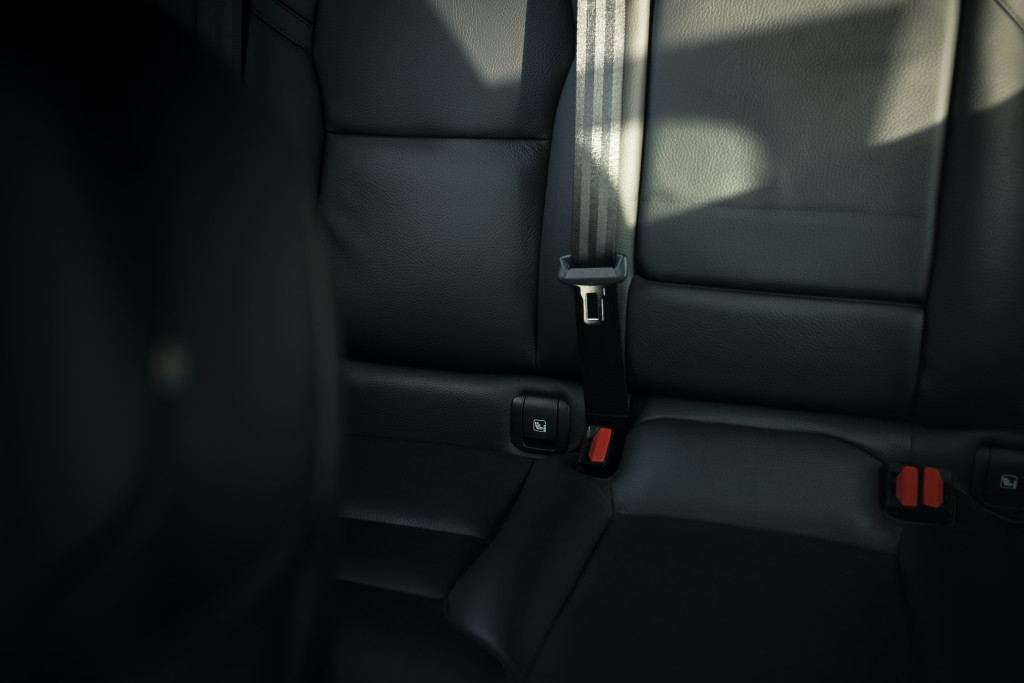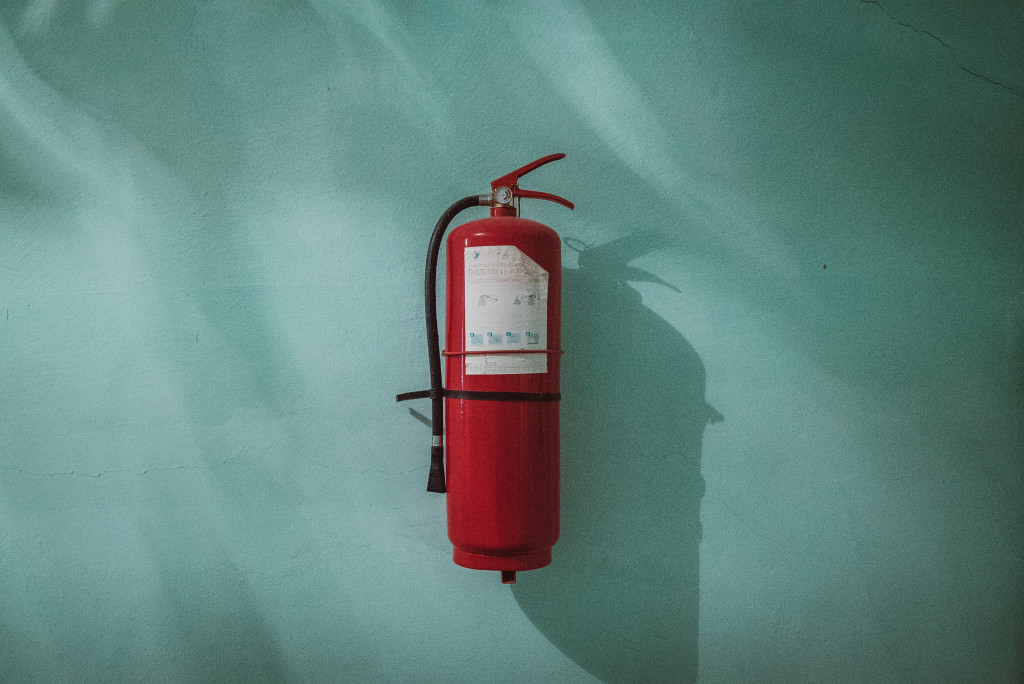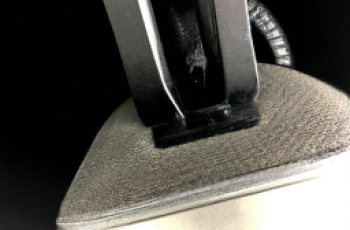In this article, you will discover the importance of coolant systems in bench grinders. These systems play a crucial role in maintaining the temperature and preventing overheating during grinding operations. By circulating coolant fluid, they effectively lubricate the workpiece and grinding wheel, reducing friction and increasing overall efficiency. We will explore the various types of coolant systems available for bench grinders and how they contribute to a safer and more productive grinding experience. So, let’s dive into the world of coolant systems in bench grinders and uncover their significance in precision grinding.

1. Importance of Coolant Systems
Coolant systems play a crucial role in the efficient and effective operation of bench grinders. They are not just a mere accessory, but an essential component that offers several benefits. In this article, we will explore the importance of coolant systems and how they contribute to the overall performance of bench grinders.
1.1 Prevents Overheating
One of the primary functions of a coolant system in a bench grinder is to prevent overheating. During grinding operations, the friction between the workpiece and the grinding wheel generates heat. If this heat is not dissipated properly, it can lead to excessive temperatures, causing the grinding wheel to wear out quickly and potentially damaging the workpiece.
By using a coolant system, you can effectively cool down the grinding area, dissipating the heat generated. The coolant absorbs the excess heat and carries it away, preventing overheating and ensuring that the grinding process can continue without any issues. This not only extends the life of the grinding wheel but also improves the overall efficiency of the bench grinder.
1.2 Improves Grinding Efficiency
Coolant systems also play a vital role in improving the grinding efficiency of bench grinders. With the application of coolants, the heat generated during grinding is reduced, which prevents the workpiece from getting too hot. Consequently, this reduction in temperature helps to minimize workpiece deformation and improves the overall accuracy and precision of the grinding process.
Moreover, the presence of coolant helps in lubricating the grinding wheel, reducing friction and enabling smoother movement. This smooth movement enhances the material removal rate, resulting in quicker and more efficient grinding operations. By using a coolant system, you can achieve higher productivity and obtain better grinding results.
1.3 Reduces Wheel Wear and Tear
Another significant advantage of coolant systems in bench grinders is their ability to reduce wheel wear and tear. As previously mentioned, excess heat can cause the grinding wheel to wear out quickly. The abrasive grains on the wheel become dull and less effective, leading to poor grinding performance and the need for frequent wheel replacements.
By utilizing a coolant system, you can effectively minimize the temperature rise during grinding, thus preventing excessive wear on the grinding wheel. The coolant keeps the wheel cool, allowing it to maintain its sharpness for a more extended period. This not only saves you money on replacement wheels but also ensures consistent and high-quality grinding results.
2. Types of Coolant Systems
There are several types of coolant systems available for bench grinders, each offering unique advantages and suitable for different applications. Let’s explore the various types of coolant systems commonly used in bench grinders:
2.1 Flood Coolant System
The flood coolant system is one of the most commonly used types of coolant systems in bench grinders. In this system, a large quantity of coolant is continuously supplied to the grinding area, effectively flooding it. The high volume of coolant provides excellent cooling capabilities, ensuring efficient heat dissipation and preventing overheating.
Flood coolant systems are particularly suitable for heavy-duty grinding operations that require a substantial amount of heat extraction. They are commonly used in industrial settings where large bench grinders are used for prolonged periods. However, it is important to note that flood coolant systems can be messy and may require additional maintenance to manage the excess coolant.
2.2 Mist Coolant System
Mist coolant systems utilize a fine mist or spray of coolant that is directed towards the grinding area. Unlike flood coolant systems, mist coolant systems consume a relatively smaller quantity of coolant. The mist is finely atomized to provide effective cooling while minimizing coolant waste.
Mist coolant systems are ideal for applications that require precise cooling, such as grinding tasks that require close tolerances or delicate workpieces. They offer better control over the cooling process, as the mist can be directed to specific areas, ensuring localized cooling where it is needed the most. Additionally, mist coolant systems are generally less messy compared to flood coolant systems.
2.3 Air Coolant System
Air coolant systems, also known as compressed air cooling systems, utilize a stream of compressed air to cool the grinding area. Instead of using a liquid coolant, air coolant systems rely on the cooling properties of compressed air to dissipate heat.
These systems are commonly used in situations where the use of liquid coolants is not feasible or desirable, such as when grinding sensitive electronic components or materials that should not come into contact with liquids. Air coolant systems offer the advantage of being clean and easy to maintain, as there are no liquids involved. However, they may not provide the same level of cooling effectiveness as liquid-based coolant systems.
2.4 Hybrid Coolant System
Hybrid coolant systems combine the benefits of multiple coolant types to create a versatile and effective cooling solution. These systems may incorporate both liquid coolant, such as flood or mist coolant, and air coolant to optimize cooling performance based on specific grinding requirements.
The hybrid coolant system offers the flexibility to switch between coolant types depending on the application. For instance, it can utilize a liquid coolant for heavy-duty grinding operations and then switch to air coolant for delicate or sensitive materials. This adaptability makes hybrid coolant systems suitable for a wide range of grinding tasks, providing optimal cooling and enhancing overall grinding performance.
3. Components of Coolant Systems
Coolant systems for bench grinders consist of several key components that work together to deliver an efficient cooling process. Understanding these components will help you better appreciate the inner workings of coolant systems and their role in maintaining optimal grinding conditions. Let’s take a closer look at the essential components of coolant systems:
3.1 Coolant Reservoir
The coolant reservoir serves as a storage container for the coolant. It holds an adequate amount of coolant, ensuring a continuous supply to the grinding area. The size of the reservoir may vary depending on the coolant system type and the specific requirements of the grinding operation.
The coolant reservoir is typically equipped with a level indicator, allowing you to monitor the coolant levels easily. It is essential to maintain the recommended coolant level to ensure proper cooling and prevent any interruption in the grinding process.
3.2 Coolant Pump
The coolant pump is responsible for circulating the coolant from the reservoir to the grinding area. It provides the necessary pressure and flow rate to deliver a sufficient quantity of coolant for cooling and lubrication during grinding.
The pump is usually driven by an electric motor and is designed to handle the particular type of coolant used in the system. It is important to choose a pump that matches the coolant system specifications to ensure optimal performance.
3.3 Coolant Distribution System
The coolant distribution system is responsible for distributing the coolant to the desired locations within the grinding area. It consists of hoses, nozzles, and fittings that direct the coolant flow to specific areas that require cooling or lubrication.
The design of the coolant distribution system may vary depending on the coolant system type and the specific grinding operation. The distribution system should be carefully set up to ensure even and effective distribution of coolant, providing efficient cooling and lubrication to all necessary areas.
4. Coolant Selection
Choosing the right coolant for your bench grinder is crucial to ensure optimal performance and long-term reliability. There are various types of coolants available, each offering distinct properties and benefits. Let’s explore some common coolant options:
4.1 Water-Based Coolants
Water-based coolants are among the most widely used coolant types for bench grinders. They are generally cost-effective and offer excellent cooling properties. Water-based coolants can effectively dissipate heat generated during grinding operations, preventing overheating and prolonging the life of the grinding wheel.
Additionally, water-based coolants have the advantage of being environmentally friendly and non-toxic. They are easy to handle and can be easily mixed with additives to enhance their lubricating properties. However, water-based coolants may require regular monitoring and maintenance to prevent bacterial growth or the development of unpleasant odors.
4.2 Synthetic Coolants
Synthetic coolants, also known as semi-synthetic coolants, are a blend of water-soluble oils and synthetic additives. These coolants offer a good balance between cooling performance and lubrication. They provide effective cooling properties while minimizing friction and enhancing the grinding process.
Synthetic coolants have a longer lifespan compared to water-based coolants and require less frequent replacement. They also offer better rust and corrosion protection for the grinding equipment. However, synthetic coolants may be more expensive than water-based coolants, and their application may require additional considerations due to the specific additives used.
4.3 Oil-Based Coolants
Oil-based coolants, as the name suggests, are coolants based on oil. They offer excellent lubrication properties and are particularly suitable for grinding applications that require high precision and superior surface finish. Oil-based coolants provide effective cooling while minimizing heat generation, ensuring smoother and more controlled grinding operations.
Oil-based coolants typically have a higher viscosity compared to water-based or synthetic coolants. This characteristic allows them to cling to the grinding wheel and workpiece, providing continuous lubrication during the grinding process. However, oil-based coolants may require additional precautions and proper disposal methods due to their potential environmental impact.
When selecting a coolant for your bench grinder, it is crucial to consider factors such as the specific grinding application, material compatibility, cooling and lubrication requirements, and any environmental regulations that may apply. Consult the manufacturer’s recommendations and seek professional advice if needed to make an informed coolant selection.

5. Coolant System Maintenance
Proper maintenance of coolant systems is essential to ensure their optimal performance and longevity. Regular cleaning and inspection, checking coolant levels, and replacing coolant filters are some of the critical maintenance tasks to consider. Let’s delve into each aspect of coolant system maintenance:
5.1 Regular Cleaning and Inspection
Regular cleaning and inspection of the coolant system components are essential to maintain its efficiency and avoid any potential issues. Over time, coolant systems may accumulate debris, contaminants, or sludge that can affect their performance.
Periodically clean the coolant reservoir to remove any accumulated debris or sediment. Use manufacturer-recommended cleaning agents or solutions to ensure proper removal of contaminants. Inspect the hoses, fittings, and nozzles for any signs of blockages, leaks, or damage. Clean or replace any clogged or damaged components promptly.
5.2 Checking Coolant Levels
Monitoring the coolant levels in the reservoir is critical to ensure continuous coolant supply during grinding operations. Low coolant levels can disrupt the cooling process and lead to excessive heat generation.
Regularly check the coolant levels in the reservoir and maintain the recommended levels. Refill the reservoir with the appropriate coolant as necessary. Remember to use the correct coolant type and adhere to the manufacturer’s guidelines to avoid any compatibility issues or performance degradation.
5.3 Replacing Coolant Filters
Coolant filters play a vital role in maintaining the cleanliness and quality of the coolant. Over time, the filters may become clogged with debris, reducing their effectiveness in removing contaminants.
Inspect the coolant filters regularly and replace them as recommended by the manufacturer. This will ensure that the coolant remains free from contaminants and maintains its cooling and lubricating properties. Following a regular filter replacement schedule will help prolong the life of your coolant system and maintain its optimal performance.
6. Safety Considerations
When working with coolant systems in bench grinders, it is essential to prioritize safety to prevent accidents and ensure a safe working environment. Here are some key safety considerations to keep in mind:
6.1 Proper Personal Protective Equipment
Always wear the appropriate personal protective equipment (PPE) when operating bench grinders with coolant systems. PPE may include safety glasses or goggles, gloves, and protective clothing. These items will help protect you from coolant splashes, debris, and potential eye injuries.
Consult the manufacturer’s recommendations and local safety regulations to determine the specific PPE requirements for your grinding operations. Remember to inspect and replace damaged PPE regularly to ensure their effectiveness.
6.2 Following Manufacturer’s Guidelines
Adhere to the manufacturer’s guidelines and instructions when installing, operating, and maintaining the coolant system. The manufacturer’s recommendations will provide valuable insights into the proper setup and usage of the coolant system, ensuring optimal performance and safe operation.
Following the manufacturer’s guidelines also helps avoid any warranty issues and ensures that the coolant system operates within its intended parameters. If you have any doubts or questions regarding the operation or maintenance of the coolant system, contact the manufacturer or consult a professional.
6.3 Regular Equipment Maintenance
In addition to maintaining the coolant system, it is crucial to perform regular maintenance on the bench grinder itself. Bench grinders should be inspected regularly for any signs of wear or damage. Ensure that all safety guards are in place and properly adjusted to provide adequate protection during grinding operations.
Regularly inspect the grinding wheel for any cracks, chips, or signs of wear. Replace any damaged or worn-out wheels promptly to prevent accidents. Properly align and balance the grinding wheels to ensure smooth and safe operation.
By prioritizing safety and adhering to recommended maintenance practices, you can create a safer working environment and minimize the risk of injuries or accidents while working with coolant systems in bench grinders.

7. Common Coolant System Issues
While coolant systems offer numerous benefits, they may encounter certain issues that can affect their performance. Being aware of these common coolant system issues will help you identify and address them promptly. Let’s explore some potential issues:
7.1 Coolant Contamination
Over time, coolant systems may experience contamination due to various factors, such as debris, sludge, or bacterial growth. Contaminated coolants can affect the cooling and lubricating properties, leading to inadequate performance and potential damage to the grinding wheel or workpiece.
Regularly monitor the coolant for any signs of contamination. Inspect the coolant for debris or abnormal odors and observe any changes in its color or consistency. If contamination is detected, consult the manufacturer’s recommendations and take appropriate measures to clean or replace the coolant.
7.2 Pump Failure
The coolant pump is a critical component of the coolant system, and any failure can disrupt the cooling process. Pump failure may occur due to various reasons, such as mechanical issues, electrical problems, or clogs in the pump impeller.
If you notice a decrease in coolant flow or unusual noises coming from the pump, investigate the issue promptly. Inspect the pump for any visible damage, blockages, or loose connections. If the pump is not functioning properly, consult the manufacturer’s guidelines for troubleshooting or consider contacting a professional for repair or replacement.
7.3 Clogs in Distribution System
Clogs in the coolant distribution system can disrupt the even flow of coolant to different areas of the grinding operation. These clogs may occur due to debris, sludge, or inadequate cleaning and maintenance.
Regularly inspect the hoses, fittings, and nozzles in the coolant distribution system for any signs of blockages or restrictions. Clean or replace any clogged components to ensure proper coolant distribution. Implementing a regular maintenance schedule and adhering to recommended cleaning practices can help prevent clogs and ensure efficient coolant flow.
8. Troubleshooting Coolant System Problems
When encountering issues with your coolant system, it is important to troubleshoot the problems systematically. Here are some troubleshooting steps you can take to address common coolant system problems:
8.1 Inspecting Coolant Lines
Inspect the coolant lines for any leaks, blockages, or loose connections. Ensure that the coolant lines are properly connected and free from any obstructions. If there are any visible leaks, tighten the connections or replace the damaged sections of the coolant lines.
Regularly monitor the coolant flow during grinding operations. If you notice a decrease in coolant flow or uneven distribution, it may indicate a blockage or restriction in the coolant lines. Inspect the lines for any signs of blockages, and clean or replace them as necessary.
8.2 Checking Pump Operation
If you suspect an issue with the coolant pump, start by checking its operation. Ensure that the pump is receiving power and that its motor is functioning properly. If the pump does not start or exhibits unusual noises, consult the manufacturer’s troubleshooting guide or contact a professional for assistance.
Inspect the pump for any visible damage, loose connections, or blockages in the impeller. Clean or remove any debris or blockages that are affecting the pump’s performance. If necessary, consider replacing the pump to restore the coolant system’s functionality.
8.3 Flushing and Cleaning the System
If you are experiencing coolant contamination or inadequate coolant flow, it may be necessary to flush and clean the coolant system. Flushing the system involves removing the existing coolant and thoroughly cleaning the reservoir, coolant lines, filters, and fittings.
Consult the manufacturer’s guidelines for specific instructions on flushing and cleaning the coolant system. Use recommended cleaning agents or solutions to ensure proper removal of contaminants, sludge, or bacterial growth. After cleaning, properly refill the coolant reservoir with the appropriate coolant, maintaining the recommended coolant-to-water ratio if applicable.
If troubleshooting the coolant system issues on your own does not resolve the problem, do not hesitate to seek help from the manufacturer or a professional technician. They can provide expert guidance, identify potential underlying issues, and ensure the coolant system is operating optimally.
9. Upgrading Coolant Systems
As technology advances, there may be opportunities to upgrade your existing coolant system to further improve its performance and efficiency. Two common approaches to upgrading coolant systems are retrofitting and integrating advanced cooling technologies. Let’s explore these options:
9.1 Retrofitting Coolant Systems
Retrofitting involves upgrading specific components or adding new features to an existing coolant system. This upgrade can target areas where the current coolant system may be lacking or where technological advancements can enhance performance.
For example, you may consider retrofitting your coolant system with improved filters or flow control mechanisms to enhance coolant cleanliness and distribution. Additionally, retrofitting may involve upgrading the pump motor or controls to optimize performance and energy efficiency.
Consult with experts or manufacturers to determine the feasibility and potential benefits of retrofitting your coolant system. They can provide insights into the available retrofit options and guide you in choosing the most suitable upgrades for your specific bench grinder and grinding operations.
9.2 Integrating Advanced Cooling Technologies
Integrating advanced cooling technologies involves replacing the entire coolant system or significant components with more advanced and innovative solutions. These technologies may utilize cutting-edge cooling mechanisms, such as advanced cooling fluids, smart monitoring systems, or advanced heat exchange methods.
The integration of advanced cooling technologies can result in significant improvements in cooling efficiency, precision, and overall performance. These upgrades may require a more substantial investment but can provide long-term benefits, such as increased productivity, improved grinding results, and reduced maintenance costs.
When considering advanced cooling technologies, consult with industry experts or specialized manufacturers who can guide you through the selection and integration process. They can assess your grinding needs, recommend suitable technologies, and ensure a seamless integration that maximizes the potential benefits.
10. Conclusion
Coolant systems are indispensable components of bench grinders, offering various benefits such as preventing overheating, improving grinding efficiency, and reducing wheel wear and tear. By selecting the appropriate coolant system type, understanding the key components, and practicing regular maintenance, you can ensure optimal performance and prolong the life of your grinding equipment.
Coolant selection is a crucial factor that should be based on specific grinding requirements, material compatibility, and environmental considerations. Regular maintenance tasks, such as cleaning, inspecting, and replacing coolant filters, are essential for maintaining the efficiency of the coolant system.
Safety considerations should never be overlooked when working with coolant systems in bench grinders. Proper personal protective equipment, adherence to manufacturer’s guidelines, and regular equipment maintenance are essential to prevent accidents and maintain a safe working environment.
Common coolant system issues such as coolant contamination, pump failure, and clogs in the distribution system can be addressed through regular inspection, proper troubleshooting, and timely maintenance. Upgrading coolant systems through retrofitting or integrating advanced cooling technologies may provide opportunities to enhance performance and efficiency.
In conclusion, coolants systems in bench grinders are not just optional accessories but vital components that contribute to optimal grinding performance. Understanding their importance, selecting the right coolant, and maintaining the coolant system properly will ensure that your bench grinder operates at its best, delivering efficient and precise grinding results.



